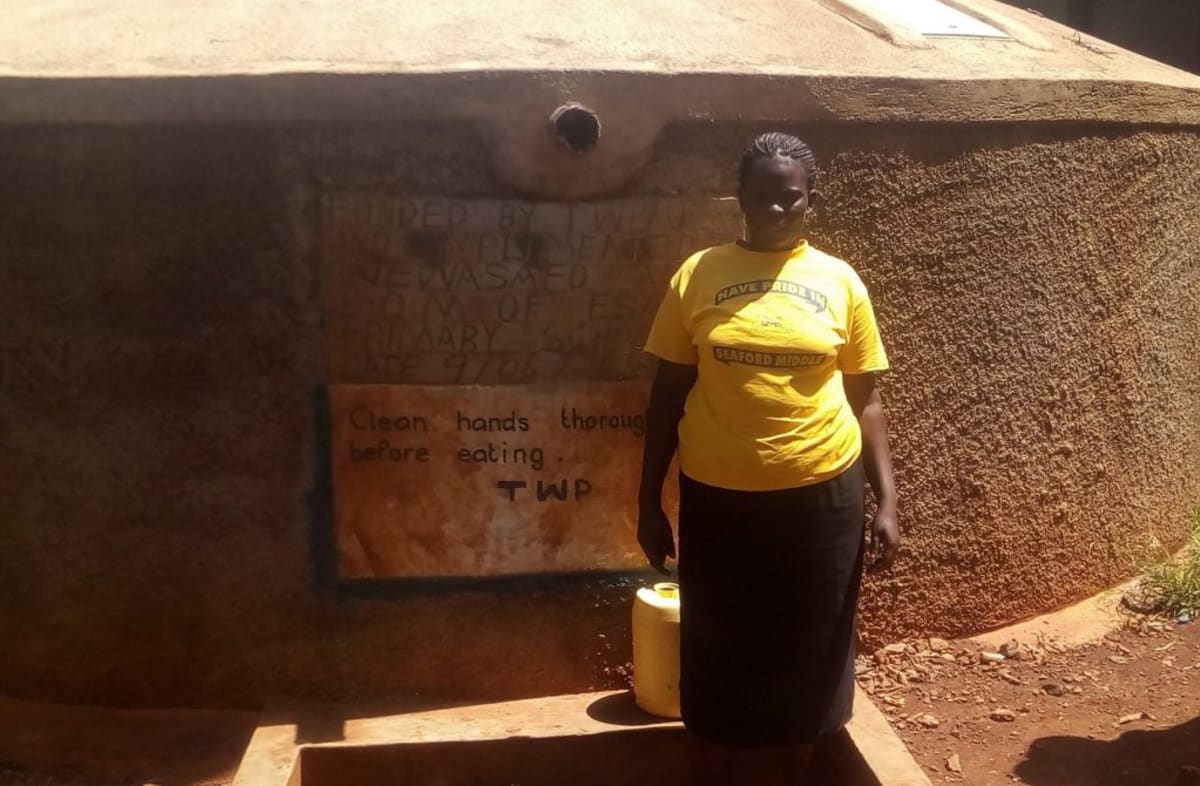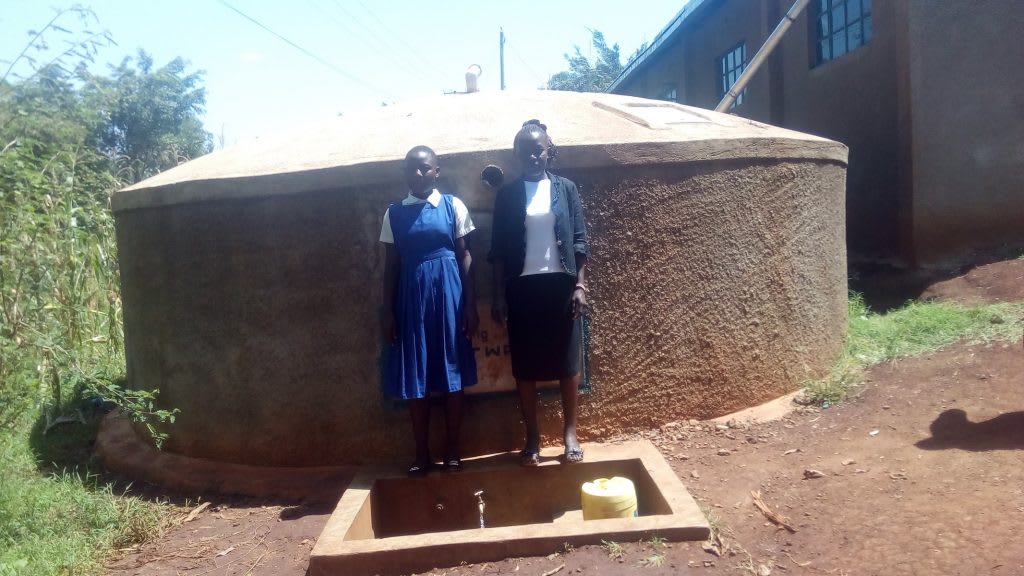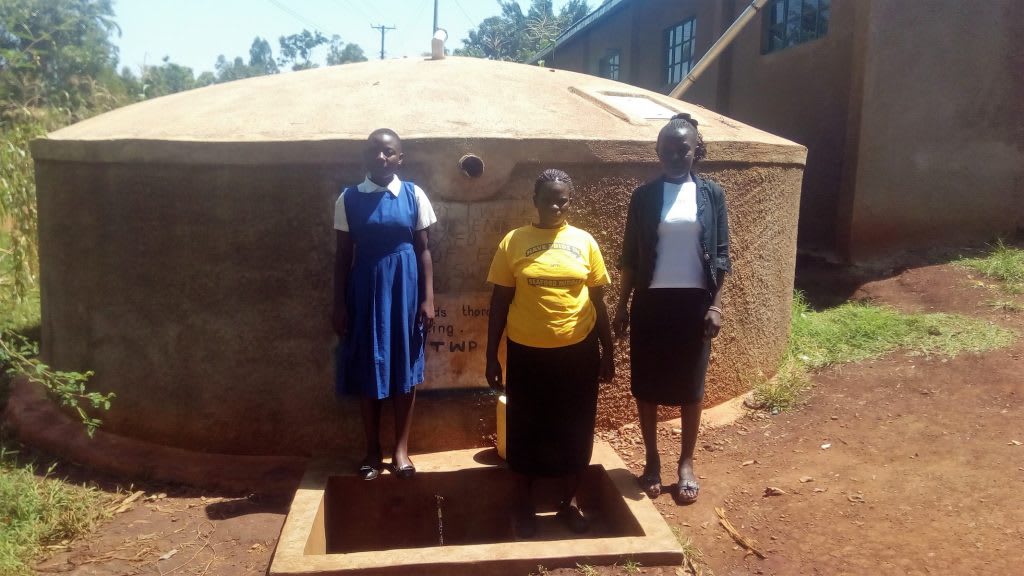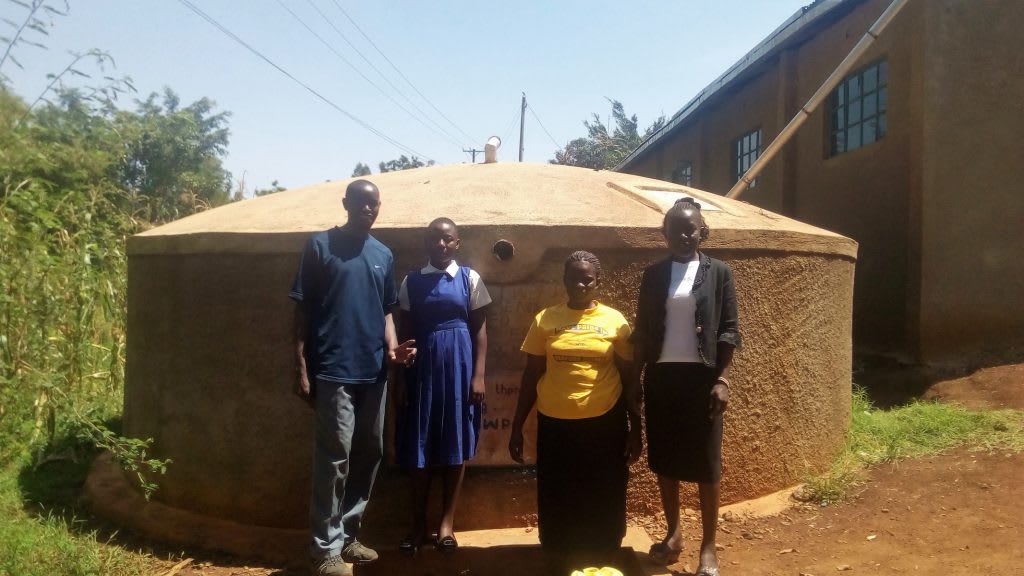This project is a part of our shared program with Western Water And Sanitation Forum (WEWASAFO). Our team is pleased to directly share the below report (edited for clarity, as needed).
Welcome to the School
Esalwa Primary School was founded in 1929 by a community member of the name of Daniel Asiachi, who donated his own land for the school's construction. The school has a population of 496 boys, 696 girls, seven male teachers and 13 female teachers. There is also an early education section that has 44 boys and 56 girls, taught by three female teachers. The school also has one cook and two security guards.
(Editor’s Note: While this many people may have access on any given day, realistically a single water source can only support a population of 350-500 people. This school would be a good candidate for a second project in the future so adequate water is available. To learn more, click here.)
A normal day for a student entails getting themselves and their share of water to school very early in the morning... by 6AM! They carry their water in small jerrycans no more than five liters, which is used for cleaning classrooms in preparation of morning lessons. Between cleaning and lessons, students meet outside for 30 minutes of exercises. Lessons begin 8AM on the dot, and continue until 10AM when they go for a short break. Lunch is from 1-2PM, and students can choose to stay on school grounds or return home. They all return by 2PM and continue with lessons until games start at 3:45PM.
This is a school in a poor community, so it has a high rate of absenteeism due to failure paying fees. Some parents, instead of sending their children to school, send them to a nearby town to sell bananas and sugarcane. They also hire out their children as cheap labor on farms. Esalwa Primary School borders a different tribe, which sometimes results in tribal disputes that disrupt schooling.
Classrooms are overcrowded for the high population, though the school has a relatively large plot of land that would allow for expansion. "The pupils congest in classes, leading to many of them not fully getting the required education, knowledge and skills. Also due to this problem, quick spread of contagious diseases like flu and tuberculosis is rampant," says Head Teacher Moses Okoko.
Water Situation
Since students carry water from home, it is impossible to know if that water is safe. Where does it really come from? Sometimes students will fetch water from the most convenient places, but not always the cleanest. Most of the local springs are unprotected, contaminated by surface runoff, farming, littering, and open defication. Though the school often boils water for cooking or drinking, students and staff still report cases of waterborne disease.
Sanitation Situation
There are 18 VIP latrines made of cement floors and brick walls. However, there is still a queue during class breaks because of the large student body. There are no hand-washing stations nearby, though, so students have no way to wash after using the latrines or before eating. Garbage is thrown away in a compost pit located in the back of the school compound.
The head teachers says, "I am very saddened when I think of many pupils in this school sufferings because of lack of enough latrines which makes the pupils uncomfortable."
Plans: Hygiene and Sanitation Training
Both students and staff are very excited to hear that they can participate in a two-day training on hygiene and sanitation. This training is meant to equip participants with the skills needed to practice good hygiene, and to promote these practices among peers and the greater community. The end goal is to eliminate water and hygiene-related diseases!
The facilitator plans to use PHAST (Participatory Hygiene and Sanitation Training), CTC (child to child), discussions, lectures, and demonstrations to teach topics including but not limited to disease transmission, hand-washing, and water treatment. The CTC method will prepare students to lead other students into healthy habits, as well as kickstart a CTC club for the school.
Plans: Rainwater Catchment Tank
A 50,000-liter rainwater catchment tank will be constructed on school grounds. Teachers, students, and parents will gather the local materials needed for this project, including sand, ballast, bricks, and hardcore. This contribution will fuel a sense of responsibility for the school and community to take care of their new facilities. Once materials are mobilized, the WEWASAFO team will arrive to lead the construction effort.
Plans: VIP Latrines
Two triple-door latrines will be constructed, providing three new latrines for each gender. Latrine materials will be mobilized the same way as the tank, ensuring the school feels these facilities are truly theirs.
Plans: Hand-Washing Stations
Two hand-washing stations will be delivered to the school before training. These come in the form of two 60-liter containers fitted with a tap. The training facilitator will demonstrate how to properly wash hands, and then students will have a chance to practice in groups. The CTC club will be responsible for filling the hand-washing containers on a daily basis.

 Rainwater Catchment
Rainwater Catchment
 Rehabilitation Project
Rehabilitation Project
























